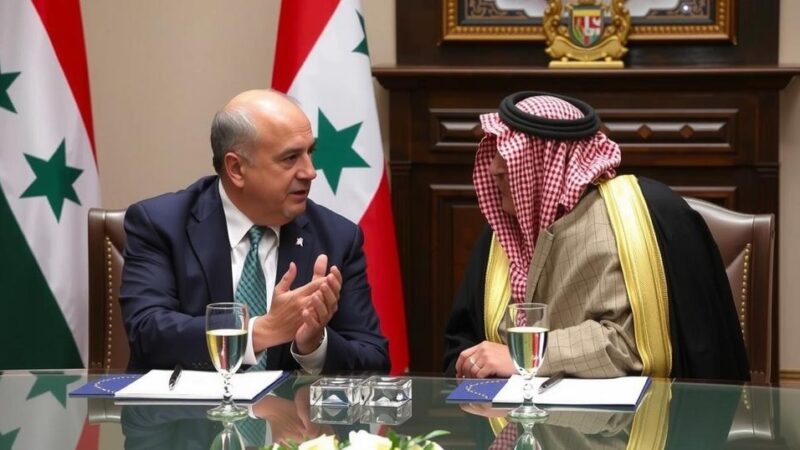The Middle East is on the brink of all-out war following the assassination of Hezbollah leader Hassan Nasrallah, Israel’s ground invasion of Lebanon, and Iran’s missile attacks on Israeli targets. International calls for restraint have failed as casualties mount and displacement rises, signaling a complex and escalating conflict across multiple fronts.
The recent escalation of conflict in the Middle East has witnessed an alarming series of events over the past week, signaling a potential trajectory towards all-out war. Key developments include the assassination of Hezbollah leader Hassan Nasrallah, Israel’s ground invasion of Lebanon, and an extensive missile assault launched by Iran against Israeli targets. These incidents have occurred despite international calls for restraint and de-escalation, primarily from Western powers and the United Nations. On the evening of September 27, an underground bunker in southern Beirut was targeted in a series of explosions, resulting in the death of Nasrallah, a figure whose public appearances have been infrequent due to security risks. This development marked a significant increase in hostilities against Hezbollah, following previous Israeli airstrikes that had already claimed over 500 lives. Nasrallah’s assassination extinguished any fleeting hopes for de-escalation that had emerged during discussions at the United Nations General Assembly. Three days later, Israeli forces initiated a ground invasion into Lebanon. The Israel Defense Forces (IDF) claimed these operations were “limited and targeted,” aiming to neutralize Hezbollah’s capability to launch cross-border attacks, a tactic that has been prevalent since the onset of the Gaza conflict triggered by a Hamas raid almost a year ago. The consequences of this offensive have been severe, prompting the displacement of approximately 1.2 million individuals within Lebanon, with Israeli military casualties totaling at least eight soldiers. Following the invasion, on September 30, Iran escalated its involvement by launching nearly 200 ballistic missiles against Israel. This attack resulted in widespread panic within Israel, leading citizens to seek shelter. The IDF reported that while most missiles were intercepted, some did manage to impact central and southern regions of Israel, leading to one confirmed death in the West Bank. Notably, Iran’s aggression appears calculated; they seem to engage in retaliatory actions while avoiding a full-fledged war, likely due to their recognition of the disproportionate military strength held by Israel and its Western allies. As the conflict unfolds, Hezbollah, despite facing substantial losses, has pledged to continue its military endeavors in Lebanon. Historical precedents suggest that Israel might find it challenging to extract itself from Lebanon once heavily engaged. As tensions mount, U.S. President Joe Biden has urged caution, advising Israel against targeting critical Iranian infrastructures during potential reprisals, highlighting the precariousness of the situation. Israeli Prime Minister Benjamin Netanyahu’s recent declarations about the multifaceted nature of the warfare—spanning Gaza, Lebanon, the West Bank, and further—exemplify the complexities and numerous fronts that are currently at play.
In the last year, the Middle East has experienced numerous crises, but the latest series of events has significantly intensified tensions between Israel, Hezbollah, and Iran. The situation remains volatile, with a dangerous blend of military action and high-stakes international diplomacy. The assassination of a key figure, followed by military aggression from multiple parties, has escalated the conflict that could lead to regional instability. The historical context, including previous conflicts like the 2006 war between Israel and Hezbollah, provides insight into the lingering hostilities and unresolved issues that perpetuate this cycle of violence.
In summary, the recent week marked a crucial juncture in the Middle Eastern conflict, evidenced by the assassination of Hassan Nasrallah, the commencement of Israel’s ground invasion of Lebanon, and the Iranian missile assault. Each event not only heightens the existing tensions but also complicates international efforts to mitigate the situation. As regional powers and allies weigh their strategies, the immediate future remains uncertain, with a cautious eye towards potential further escalations and the implications for broader regional stability.
Original Source: www.bbc.com






